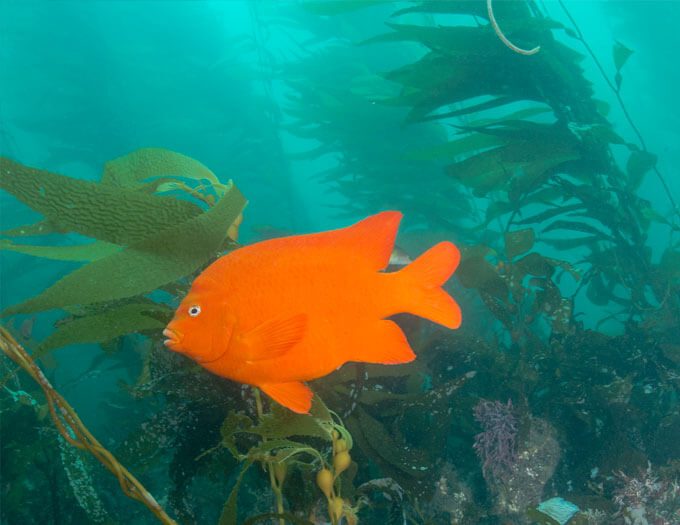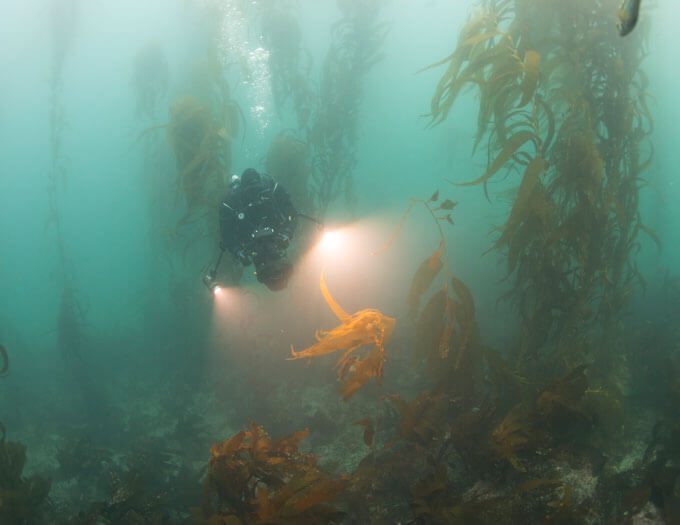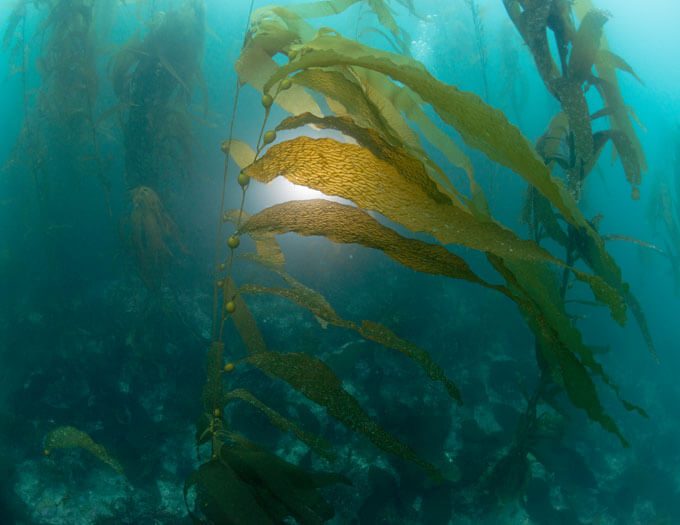“Before slipping beneath the kelp-covered surface of Anacapa’s waters, attention must be paid”
Before slipping beneath the kelp-covered surface of Anacapa’s waters, attention must be paid. From unique briefings to specialized equipment, I didn’t know scuba diving could get any more gear intensive. Sure enough, after 10 hot minutes of grunting into my dry suit with the help of my dive buddy and some talc powder, I was ready to see what the Channel Islands had in store for us.
Tethered to the ocean floor with an impressive grip, giant strands of kelp grow as tall as the ocean depths accommodate. Held up by air filled bladders known as pneumatocysts, it’s no wonder why these productive ecosystems are often compared to terrestrial forests. With sea lions on patrol and garibaldi combing the reefs, I could almost relate the sights to those found at my home in the mountains of Colorado… almost.
Giant 400-pound sea bass were among the first to greet us, and before deciding we weren’t worth the time we were able to capture some footage of the astounding fish in their home. Where kelp wasn’t engulfing the rocks, they were covered in soft coral and spiny sea urchins. This combination made for a hypnotizing display, the currents pushing their way through the undulating forest. Swaying back and forth, all I could do was look up at the towering algae (when the neck seal in my dry suit would allow) and watch as the other fish snaked between the blades.
Cold-water prep to sea lion encounters, our excursion to Anacapa was anything but ordinary. To experience life in the ocean is to experience another world entirely. No matter how much time I spend beneath the waves, I rarely feel that sense of familiarity, even when attempting to compare the diverse forests to those of my home.





